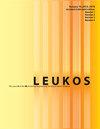Window Size Effects on Subjective Impressions of Daylit Spaces: Indoor Studies at High Latitudes Using Virtual Reality
IF 2.6
2区 工程技术
Q2 CONSTRUCTION & BUILDING TECHNOLOGY
引用次数: 37
Abstract
ABSTRACT Daylight provision to the indoor space is affected by different building elements that cannot be fully controlled by the users, such as the window size of a space. The dimensions of the fenestration not only affect the lighting levels, but they also affect how the space is perceived by its users. The present study examines three different window sizes via virtual reality, to study how they affect the perception of both a small and a large space at high latitudes. Additionally, two context scenarios (socializing and working), as well as three different sky types (overcast sky and clear skies with either high or low sun angle) were evaluated. The experimental study applied a mixed design with within-subjects and between-subjects factors. A total of 150 participants evaluated the scenes using a Likert-type scale to rate eight different subjective attributes. The statistical results showed that both window size and space type significantly affect the participants’ spatial perception, as well as their satisfaction with the amount of outside view. Larger windows led to more positively evaluated spaces for all studied attributes. Moreover, a significant interaction was found between window size and type of space for the satisfaction with the amount of view in the space, indicating that the window size was dependent on the type of space in which the windows are located. Specifically, the window sizes were rated higher in the small space than in the large space for the evaluation of amount of view. The findings show that window size affects how people perceive a space, and additionally, that other spatial features, such as space type, affect window size preferences.窗户大小对日光空间主观印象的影响:高纬度地区使用虚拟现实的室内研究
室内空间的日光供应受到不同建筑元素的影响,这些元素不能完全由用户控制,比如空间的窗户大小。开窗的尺寸不仅影响采光水平,还影响用户对空间的感知。本研究通过虚拟现实技术考察了三种不同尺寸的窗户,以研究它们如何影响高纬度地区小空间和大空间的感知。此外,还评估了两种情境情景(社交和工作),以及三种不同的天空类型(阴天和晴朗的天空,太阳角度高或低)。实验研究采用受试者内因素和受试者间因素的混合设计。共有150名参与者使用李克特量表对8个不同的主观属性进行评估。统计结果显示,窗户大小和空间类型均显著影响被试的空间感知,以及他们对外部视野量的满意度。更大的窗户为所有研究的属性带来了更积极的评价空间。此外,我们还发现窗户大小和空间类型之间存在显著的相互作用,以满足空间内的视野量,这表明窗户大小取决于窗户所在的空间类型。具体来说,小空间的窗户尺寸比大空间的窗户尺寸要高,以评估视野的大小。研究结果表明,窗户的大小会影响人们对空间的感知,此外,其他空间特征,如空间类型,也会影响人们对窗户大小的偏好。
本文章由计算机程序翻译,如有差异,请以英文原文为准。
求助全文
约1分钟内获得全文
求助全文
来源期刊

Leukos
工程技术-光学
CiteScore
7.60
自引率
5.60%
发文量
19
审稿时长
>12 weeks
期刊介绍:
The Illuminating Engineering Society of North America and our publisher Taylor & Francis make every effort to ensure the accuracy of all the information (the "Content") contained in our publications. However, The Illuminating Engineering Society of North America and our publisher Taylor & Francis, our agents, and our licensors make no representations or warranties whatsoever as to the accuracy, completeness, or suitability for any purpose of the Content. Any opinions and views expressed in this publication are the opinions and views of the authors, and are not the views of or endorsed by The Illuminating Engineering Society of North America and our publisher Taylor & Francis. The accuracy of the Content should not be relied upon and should be independently verified with primary sources of information. The Illuminating Engineering Society of North America and our publisher Taylor & Francis shall not be liable for any losses, actions, claims, proceedings, demands, costs, expenses, damages, and other liabilities whatsoever or howsoever caused arising directly or indirectly in connection with, in relation to, or arising out of the use of the Content. Terms & Conditions of access and use can be found at http://www.tandfonline.com/page/terms-and-conditions .
 求助内容:
求助内容: 应助结果提醒方式:
应助结果提醒方式:


